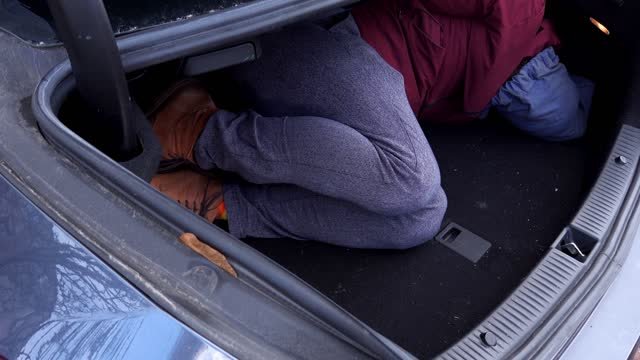On this page, we explore what you should do if you suspect or are confident a student in your school is being trafficked or is a victim of human trafficking in the? This is mostly applicable in the USA.
What should you do if you suspect a student in your school is being trafficked or is a victim of human trafficking?
If you suspect a student in your school is being trafficked or is a victim of human trafficking, you should report your concerns to the appropriate authorities, such as local law enforcement or the National Human Trafficking Hotline, avoid confronting any potential traffickers, document your observations, speak with the student privately in a safe setting, consult with school counselors and administrators, and seek additional training on human trafficking intervention techniques.
Steps to Take if You Suspect a Student is a Victim of Trafficking:
- Do Not Confront the Potential Trafficker: If you suspect a student’s family member or acquaintance is involved, do not address the issue with them. This could escalate the situation and put the student in more danger.
- Report to the Right Authorities:
- If there’s an immediate danger, call local law enforcement or 911.
- National Human Trafficking Hotline: 1-888-373-7888. They can provide guidance and resources.
- Document Observations: Make notes of any signs or evidence related to the student’s situation, such as unusual bruises, behavior changes, or comments they’ve made.
- Speak with the Student Privately: In a safe, non-confrontational manner, ask the student if they are okay or if they need help. Be patient, understanding that they might not be ready to discuss their situation.
- Connect with School Counselors and Administrators: They might have additional training or resources to help address the situation.
- Seek Training: If you work in a school, consider undergoing training on human trafficking signs and intervention techniques. This preparation can equip you to handle such situations more effectively.
Responding to Suspected Cases of Human Trafficking in Schools
Human trafficking, often described as modern-day slavery, involves the use of force, fraud, or coercion to exploit an individual for labor or commercial sexual purposes. The crime affects people from all backgrounds, including students. If you suspect or are confident that a student in your school is being trafficked or is a victim of human trafficking, taking appropriate steps can have life-saving consequences.
1. Facts about Human Trafficking in Schools:
- Prevalence: Traffickers often target vulnerable individuals, and young people, especially those with unstable home situations, previous abuse, or low self-esteem, can be particularly susceptible.
- Indicators: Signs of a student being trafficked might include frequent unexplained absences, sudden changes in attire or possessions, withdrawal from friends and activities, and unexplained injuries.
2. Examples of Trafficking in Schools:
- Jane’s Story: Jane, a high school junior, was befriended by an older man she met online. Over time, he manipulated her into believing they were in a romantic relationship. She began missing school to meet him, and before long, he was coercing her into commercial sex work.
- Liam’s Story: Liam, an international student, was promised a better education in the U.S. However, upon arrival, his passport was taken away, and he was forced into domestic labor, working long hours after school at the home of a distant relative, deprived of proper food and rest.
3. Theories and Best Practices for Addressing Trafficking in Schools:
Trauma-Informed Approach: This approach understands and considers the widespread impact of trauma and potential paths for recovery. It avoids re-traumatization, ensuring the victim feels safe and supported.
Strength-Based Approach: Focuses on the inherent strengths of individuals and their capacity to recover, rather than on their weaknesses or deficits.
Conclusion
The presence of human trafficking in schools is a grim reminder that this crime can infiltrate even the places we deem safe. Being informed, vigilant, and prepared can make all the difference in identifying and helping a student in distress. Remember always to prioritize the safety and well-being of the student, collaborating with experts and authorities to provide the necessary support.

